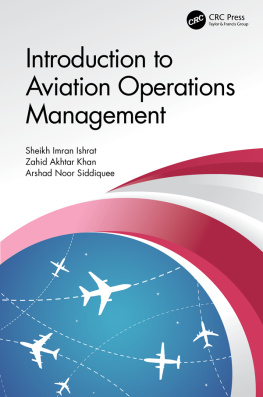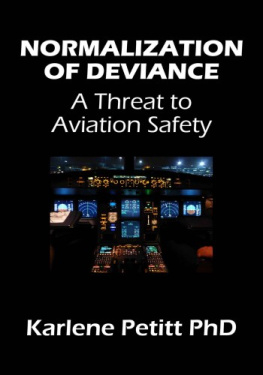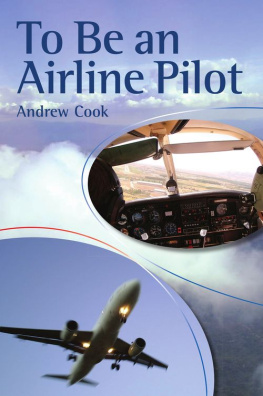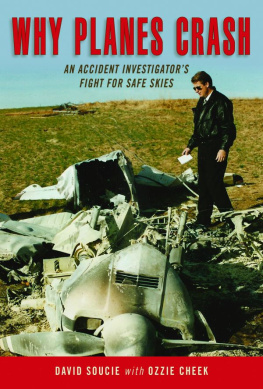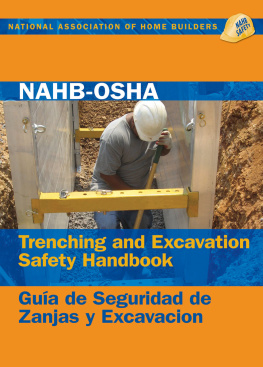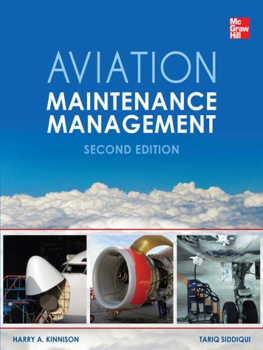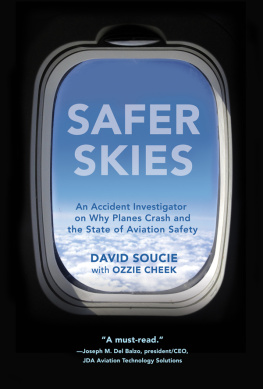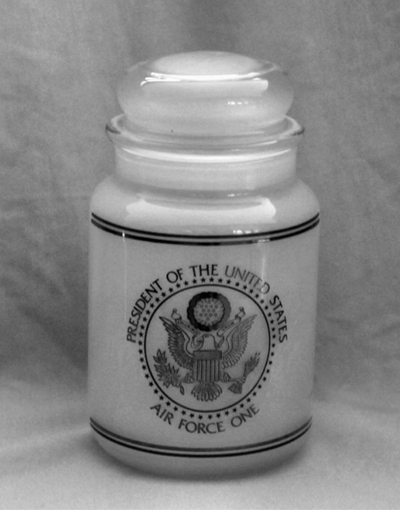
Special Award Given to the Author for Enhancing Air Force One Crew Training, (See Chapter 14).
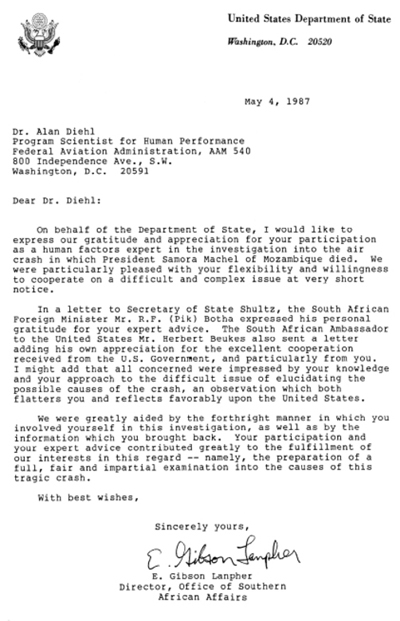
U.S. State Department Memorandum on the Authors Investigation of an African Presidential Crash, (See Chapter 3).

The Authors Safety Triangle Paradigm, (See Chapter 18).
AIR SAFETY INVESTIGATORS
Using Science to Save Lives
One Crash at a Time
ALAN E. DIEHL, Ph.D.
Former NTSB, FAA, and USAF
Air Safety Investigator
Copyright 2013 by Alan E. Diehl, Ph.D.
Library of Congress Control Number: | 2012918683 |
ISBN: | Hardcover | 978-1-4797-2894-7 |
Softcover | 978-1-4797-2893-0 |
Ebook | 978-1-4797-2895-4 |
All rights reserved. No part of this book may be reproduced or transmitted in any form or by any means, electronic or mechanical, including photocopying, recording, or by any information storage and retrieval system, without permission in writing from the copyright owner.
Rev. date: 4/9/2013
Xlibris Corporation
1-888-795-4274
www.Xlibris.com
CONTENTS
DEDICATION
To the victims, Graca and Nelson Mandelahopefully, you will soon learn what really happened on that African hillside. Jimmy Merryman, now you can understand why your dad hit those trees in Maine. Sylvia Tsao, this is why you and Flight Attendant Janice Brown could not save your son, Evan, at Sioux City. Mrs. Ron Brown this is what they would not tell you about the crash in Croatia that killed your beloved husband, the Secretary of Commerce. To the admirers of John F. Kennedy Jr., this is why he did not get the training that could have saved his life that hazy evening off Marthas Vineyard.
Ye shall know the truth, and the truth shall make you angry.
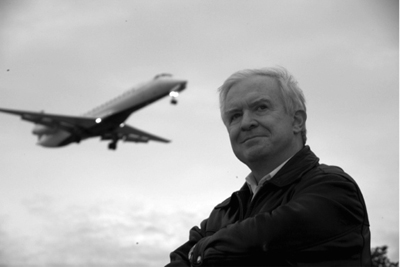
(Bridgitte Krupke Photo)
Captain John Nance, ABC World News Aviation Analyst.
Despite the regrettable American tradition of slinging the word hero toward highly questionable recipients, true unsung heroes do exist among us; and occasionally, you may have the great luck to meet one (though, at the time, you may not know it). After all, the profile of an unassuming hero is someone who happily labors in obscurity, focused with laserlike precision on a target he or she deems bigger than their own self-interests. That, in fact, is what heroism is made ofselflessness coupled with great courageand I was lucky enough to get to know and work with just such a gentleman.
It was the dawn of the greatest folly in American transportation history, a mistake of near-biblical proportions which subsequently squandered over forty billion dollars of corporate equity, thousands of lives, and a generation of airline professionals: The airline deregulation act of 1978. The damaging fallout from deregulation is still impacting air travel worldwide, but in the immediate aftermath in 1978 through 1980, one of the greatest concerns deep within the operational airline world (considerations a clueless Congress had pointedly ignored) was what was to become of air safety.
With new airlines popping up like fleas, the Federal Aviation Administration ill-equipped to guarantee safe operations, and the National Transportation Safety Board facing a potential surfeit of human-caused accidents they were ill-equipped to understand, the stage was set for a bloodbath.
Why that bloodbath did not fully occur is one of the hidden success stories of modern aeronautics and in no small measure resulted from the efforts of a single NTSB investigator in the right place at the right timethe author of this book.
The NTSB had traditionally viewed human-caused accidents as something they couldnt effectively investigate or explain. We cant get inside a pilots head, was the long-standing demurrer. With the threat of an avalanche of inexperienced airlines and aircrews joining an industry that kept crashing airplanes because of human failures, the board had become very uncomfortable with that excuse, and one of their first attempts to rise to the challenge was the hiring of a Ph.D. named Alan Diehl as their first human performance expert.
When the small community of Rockland, Maine, was impacted on the foggy evening of May 30, 1979, by the fatal crash of their local airlines biggest airplane, Diehls dispatch from Washington to investigate the disaster was an unseen stroke of luck. A week into the field investigation, Diehl was on the phone to his boss in Washington with a question few, if any, of the other NTSB staff members would have known to ask: Theres something more going on here. Can I stay a bit longer? Indeed there was more going on, but it took additional weeks of sleuthing to be able to dig past the surface layers of the accident and lay bare a plethora of causal factors, all of which were vital to the understanding of how to keep upstart airlines safe, and none of which would have been understood without a man of Diehls background and courage.
Courage because it took pushing a nonstandard way of looking at air disasters to finally lay open a dead pilots mind, exposing what the various factors were that contributed to the accident and what could have been done to prevent it. In Rockland, an oppressive management, an air of tolerance for dangerous rule-breaking, and a macho environment created to encourage cowboyish pilot behavior had coupled with poor maintenance, poor cockpit design, and all but nonexistent FAA supervision to kill seventeen people. Al Diehls pointwhich he refused to back away fromwas that every facet of the many human failures in such an accident had to be fully understood and addressed if future iterations were to be prevented.
There were no banners back at NTSB headquarters celebrating this breakthrough, but it was a major turning point, and over the next few years Diehls courage (some detractors called it political naivet) overcame numerous obstacles and traditionalists to pioneer innovative ways of researching accidents. The techniques Diehl pushed into acceptance allowed the rapidly expanding airline and aviation industry to better predict what pressures and factors in their own operations might make a human failure accident more likely. The majority of these folks heretofore had soft-peddled threats such as crew fatigue, management pressure to fly regardless of risk, equipment ergonomics, environmental stressors, and government blunders. Now these impediments were laid on the tablenot always to the applause of government overseers.
Nevertheless, what Diehl had materially helped midwife was a historic change in the way not only the NTSB but all accident investigators around the world approached systemic failure in complex human systems: by unveiling the causal role of human failures (not just pilot error) in crashes.
Al Diehl also drafted a host of important recommendations, including one that helped spark one of the most momentous changes in aviation history: the advent of Crew Resource Management or CRM. In fact, his steady hand as a major-change agent and the invaluable nature of his contributions in how human accidents were investigated, and his stewardship of effective countermeasures such as CRM cannot be overstated.
Next page

